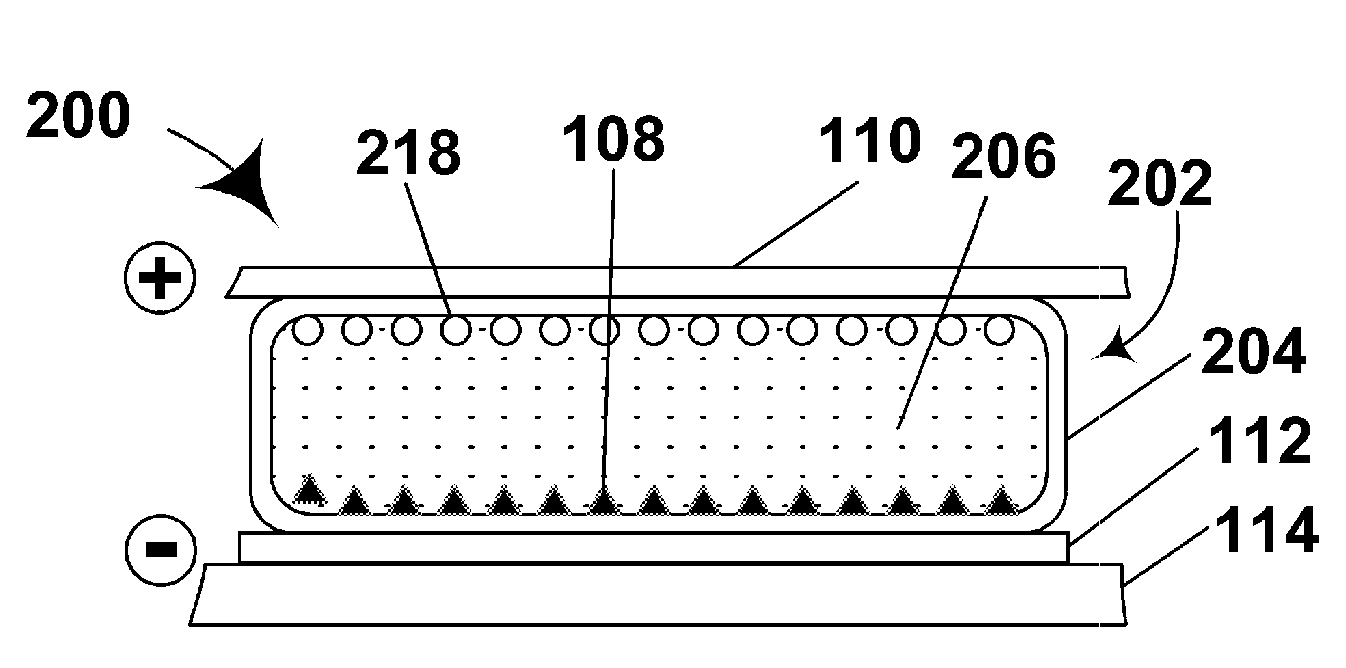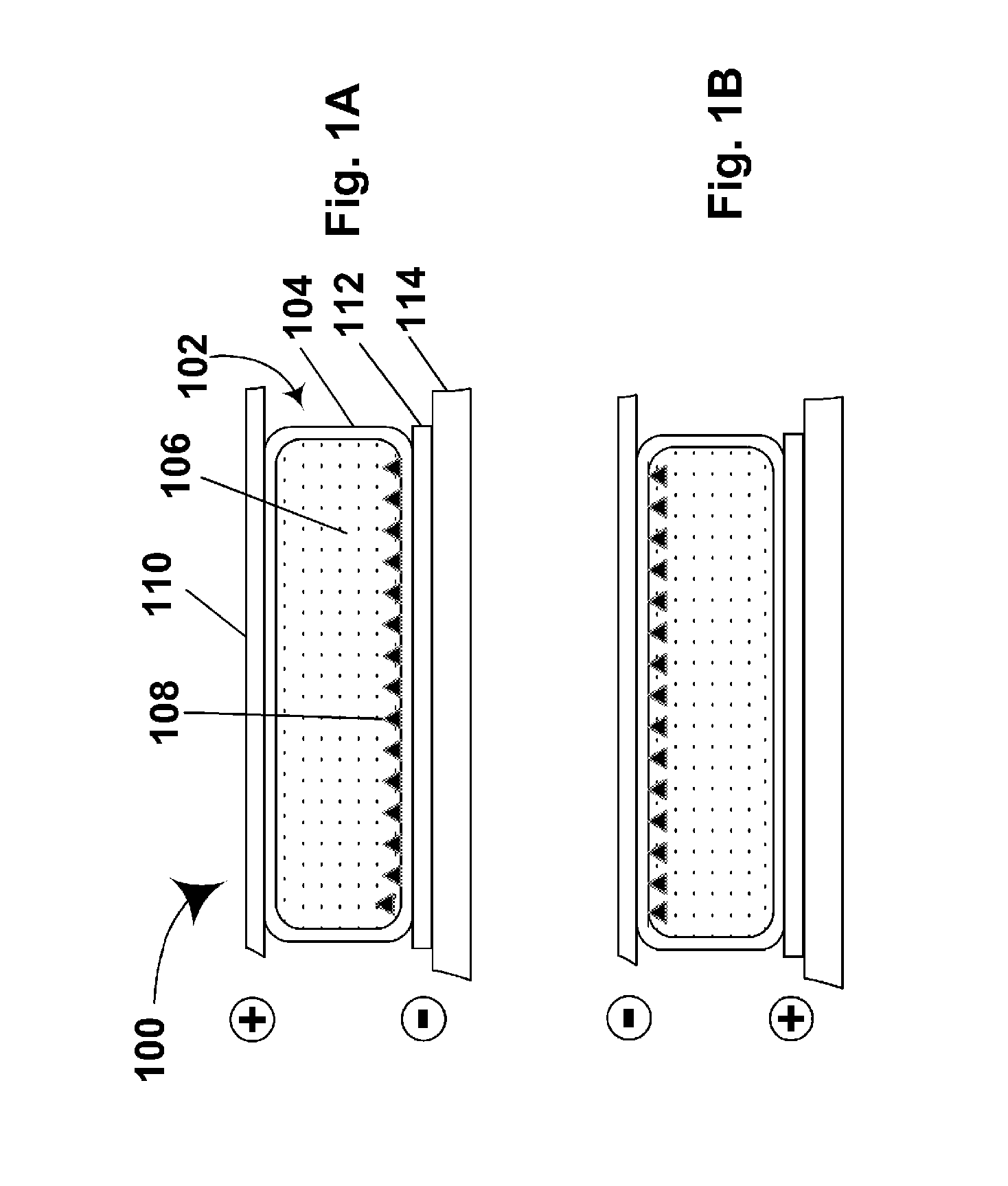Electrophoretic particles and processes for the production thereof
a technology of electrophoretic particles and processes, applied in the field of electrophoretic particles, can solve the problems of inadequate unable to meet the needs the service life of encapsulated electrophoretic displays, both single and dual particle types, is still lower than
- Summary
- Abstract
- Description
- Claims
- Application Information
AI Technical Summary
Benefits of technology
Problems solved by technology
Method used
Image
Examples
example 1
[0196]This Example illustrates the provision of a silica coating on various types of pigment particles. The procedure used is adapted from U.S. Pat. No. 3,639,133.
[0197]Ferric oxide (Fe2O3, 50 g) was placed in a sodium silicate solution (430 ml of a 0.073M solution with 1.9% sodium hydroxide), and the resultant mixture was rapidly stirred and then sonicated at 30-35° C. The suspension was then heated to 90-95° C. over a period of 1 hour and sulfuric acid (150 ml of a 0.22 M solution) and additional sodium silicate (75 ml of a 0.83 M solution with 0.2% sodium hydroxide) were added simultaneously over a period of 2.5 to 3 hours, with stirring. After these additions had been completed, the reaction mixture was stirred for an additional 15 minutes, then cooled to room temperature, added to plastic bottles and centrifuged at 3500 rpm for 15 minutes. The supernatant liquor was decanted, and the silica-coated pigment re-dispersed in deionized water and centrifuged at 3500 rpm for 15 minute...
example 2
[0198]This Example illustrates reaction of the silica-coated pigment prepared in Example 1 with a bifunctional reagent in the first stage of an RGP process of the present invention.
[0199]To a mixture of ethanol (500 ml) and water (50 mL), concentrated ammonium hydroxide was added until the pH reached 9.0-9.5, N-[3-(trimethoxysilyl)propyl]-N′-(4-vinylbenzyl)ethylene diamine hydrochloride (40 g of a 40 weight percent solution in methanol) was added, and the resultant solution was stirred rapidly for 4 minutes. The silica-coated ferric oxide (25 g) prepared in Example 1 was then added, and the mixture stirred rapidly for 7 minutes. The resultant suspension was poured into plastic bottles and centrifuged at 3500 rpm for 30 minutes. The supernatant liquor was decanted, and the silanized pigment re-dispersed in ethanol and centrifuged at 3500 rpm for 30 minutes, and the liquid decanted. The washing was repeated, and the pigment finally dried in air for 18 hours, then under vacuum at 70° C...
example 3
[0201]This Example illustrates conversion of the silanized pigment produced in Example 2 to a polymer-coated pigment useful in an electrophoretic display.
[0202]The silanized pigment produced in Example 2 (50 g) was placed in a round-bottomed flask with toluene (50 g) and 2-ethylhexyl methacrylate monomer (50 g). The resultant mixture was stirred rapidly under a nitrogen atmosphere (argon may alternatively be used) for 20 minutes, then slowly heated to 50° C. and AIBN (0.5 g in 10 ml of toluene) added quickly. The suspension was then heated to 65° C. and stirred at this temperature under nitrogen for a further 18 hours. The resultant viscous suspension was poured into plastic bottles, the flask being washed out with ethyl acetate to remove residual product and the ethyl acetate solution added to the bottles. The bottles were centrifuged at 3500 rpm for 30 minutes. The supernatant liquor was decanted, and the polymer-coated pigment re-dispersed in ethyl acetate and centrifuged at 3500...
PUM
| Property | Measurement | Unit |
|---|---|---|
| temperature | aaaaa | aaaaa |
| diameters | aaaaa | aaaaa |
| diameters | aaaaa | aaaaa |
Abstract
Description
Claims
Application Information
 Login to View More
Login to View More - R&D
- Intellectual Property
- Life Sciences
- Materials
- Tech Scout
- Unparalleled Data Quality
- Higher Quality Content
- 60% Fewer Hallucinations
Browse by: Latest US Patents, China's latest patents, Technical Efficacy Thesaurus, Application Domain, Technology Topic, Popular Technical Reports.
© 2025 PatSnap. All rights reserved.Legal|Privacy policy|Modern Slavery Act Transparency Statement|Sitemap|About US| Contact US: help@patsnap.com



